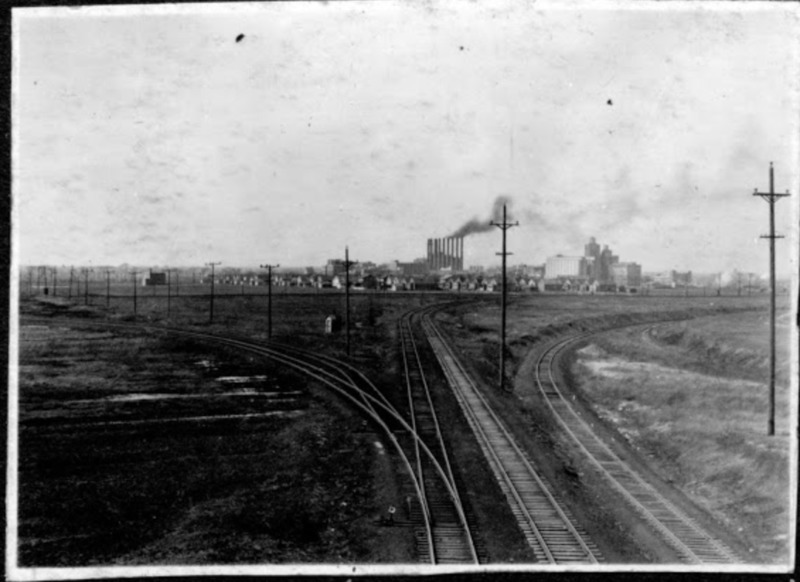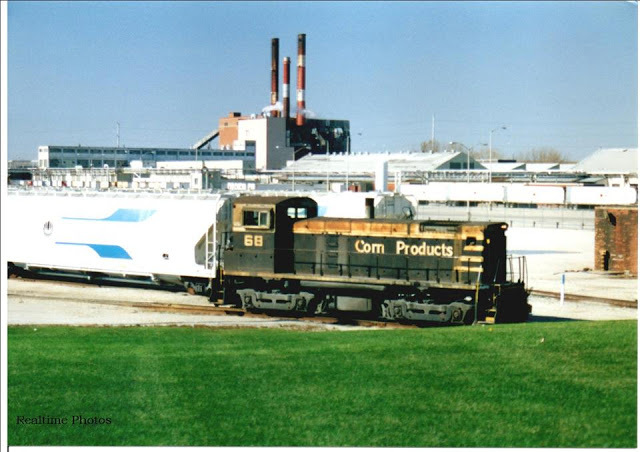Argo Corn Products
How the Great Migration Shaped the Life of Emmett Till

A corn processing plant fueled the great migration, lured the Till family north, and created stability, if not equality, for the young Emmett Till.
In 1923, Wiley Carthan left Mississippi on the Illinois Central Railroad, heading for Chicago. He settled just outside the Chicago city limits in the town of Argo, Illinois. Argo’s real name was Summit, but the largest corn processing plant in the world—the maker of Karo syrup, Bosco malted milk, Mazola cooking oil, and, critically, Argo Corn Starch—made Summit a company town, and locals called the place Argo. Carthan settled in and sent for his wife Alma and daughter Mamie, and the family made a life there. Mamie Carthan graduated with honors from the high school and soon married another Argo worker, Louis Till. In 1941, they had a son named Emmett.
The Argo plant shaped every facet of life in Summit. If locals called the town “Argo,” they called Argo the “university”—it was the place where boys went after high school. Emmett’s father, his stepfather, and many members of the Till family punched the clock at Argo.
Historians use the phrase “The Great Migration” to describe the early years of African American exodus out of the South to cities in the North. Of course, that movement really started with the underground railroad and continued through the rest of the 19th century. But the first mass migration came in the era of World War I and into the 1920s. For example, Chicago’s blacks made up 2% of the city’s population in 1910, 7% by 1930, and 25% by 1960.
Southern Jim Crow laws were firmly in place by 1900, depriving African Americans of the rights of citizens—voting, equal justice under law, trial by jury, etc. Few Southern blacks managed to acquire property, so share-cropping and tenancy kept most in penury. Schools, accommodations, transportation, and housing were all rigidly segregated, and black life was hedged in by a vicious system that enforced laws against vagrancy and other crimes with long sentences and brutal labor. And too, the lynching of blacks who “got out of line” added an element of terror to the indignities of Jim Crow.
Faced with such conditions, Pulitzer Prize-winning historian Isabel Wilkerson has written that “nearly every black family in America had a decision to make.” And scores upon scores did “what human beings looking for freedom, throughout history, have often done. They left.” The Carthans joined the throng of what was, in Wilkerson's words, a “back-against-the wall, reluctant yet hopeful search for something better.”
The World War I economy and the prosperity of the 1920s created new opportunities in the urban North. Word of these opportunities spread on the growing popularity of the Chicago Defender, a weekly newspaper with national circulation that repeatedly urged Southern blacks to leave their benighted homeland. The same railroad that carried Till to and from Mississippi carried the Defender to the rural South, bearing news of a brighter day in Chicago.
Equally important, African Americans voiced their resentment of American apartheid. The founding of the NAACP in 1909, for example, was a key moment of black politicization and resistance. The growing political resistance combined with industrial opportunities in the North lured the dispossessed to Chicago by the hundreds of thousands.
Corn Products made Argo a small boom town, attracting not only Southern blacks, but Poles, Slovaks, Russians, and Italians. African Americans got the worst jobs, but the work was steady, and the town prosperous enough to sustain a life far better than anything in Mississippi. Blacks founded their own churches, businesses, and neighborhoods. Like the town itself, Corn Products was not fully integrated but not rigidly segregated either, offering a margin of decency. Life got even better for workers when the union organized Corn Products in the late 1930s. The Argo Local of the Oil, Chemical and Atomic Workers Union brought better pay, benefits, overtime, and if not equality, at least a measure of dignity and security.
Before Till took the train to Mississippi in 1955, his family had its trials: Wiley Carthan left for Detroit, Louis Till abused his wife. But the modest prosperity provided by Corn Products made Till's hometown a more safe and secure environment than he might have experienced in Mississippi or on Chicago’s South Side.
Video
Images



